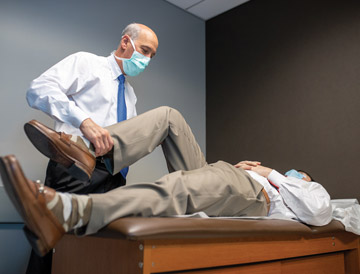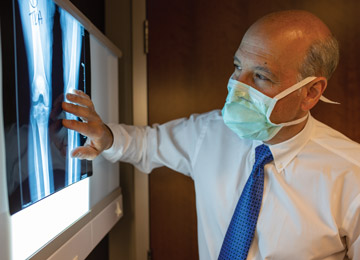I replace about a thousand knees a year and treat each one as a unique case when restoring the joint's normal range of motion and stability. Soft tissues guide me to how the knee was positioned before the degenerative effects of osteoarthritis ?changed the bone alignment. Based upon how the knee moves with all the muscles, ligaments and tendons intact, I determine how the native knee was aligned, and adjust placement of the implant to match it. I've developed micro-shims to move the knee around by minute amounts — up and down, right and left, back and forth. After I place the implant and put the knee through an entire range of motion, the joint's surface areas remain in perfect contact throughout. This leads to a more stable joint, which results in less pain for the patient and better post-op function.
The key is getting knee replacements right the first time because fixing a poorly done knee never quite works out. Surgeons can improve how it feels and functions, but the joint will never be as good as it could have been. Achieving positive, patient-pleasing results demands understanding several factors that impact outcomes.
- Cement vs. cementless fixation. There's a revival of cementless fixation in knee implants, which concerns me because I saw the problems of the first cementless knee wave decades ago. In certain areas of the body, cementless fixation works great. For example, most hip replacements involve cementless fixation. It's easier and faster, but more importantly, it's beneficial to the patient. Bone almost always ingrows into the implant, and remains ingrown for a long time. The technique retains bone stock better than cement does.
Cementless fixation of the knee, however, is associated with many problems. The blood supply around the knee isn't as good as it is around the hip, a factor that leads to a poorer ingrowth rate. Early after their surgeries, some total knee patients experience lack of ingrowth: 1% or 2% of patients on the femoral side of the knee and 3% to 5% of patients on the tibial side, which is a lot.
.svg?sfvrsn=be606e78_3)


.svg?sfvrsn=56b2f850_5)